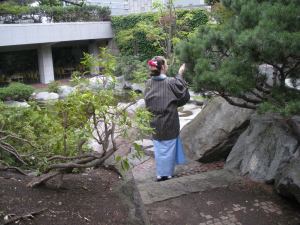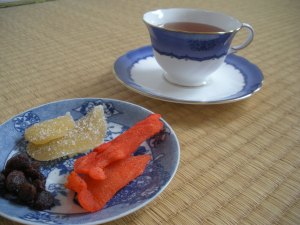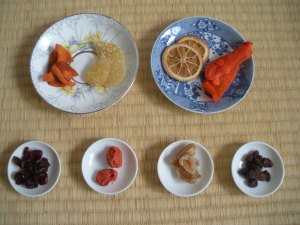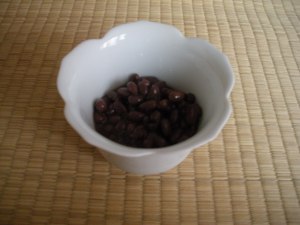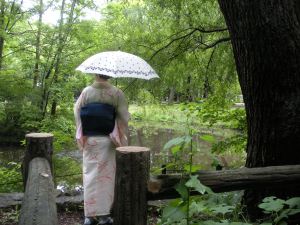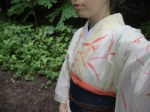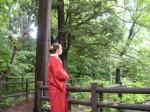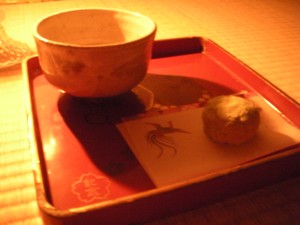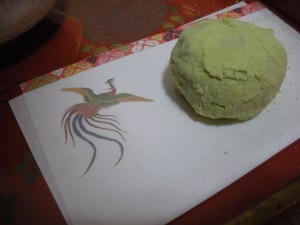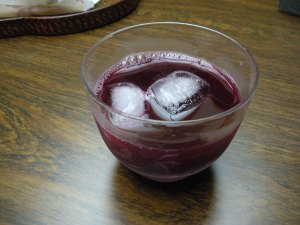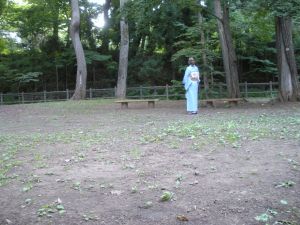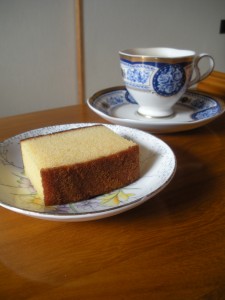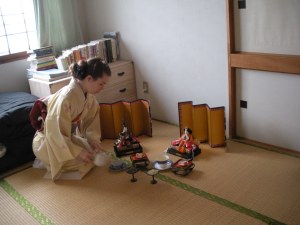I wore my blue silk hitoe kimono to a citizen’s lecture. What is a citizen’s lecture, you ask? It is a sort of lecture by scholars or other smart people put on by the city to which any resident is allowed to go. The cost is very low or free. The idea is to not only give residents something interesting to do, but also to encourage people to study and constantly learn more things.
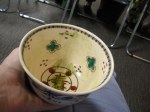 This lecture was about the concept of “omotenashi” (hospitality) in Japanese culture, the lecturer being Dr. Kumakura from Shizuoka Culture and Arts University. The lecture itself was free, but you could have some matcha tea and sweets for 500 yen beforehand in the lobby. The tea was served in a southeast asian style tea bowl and the sweet was a nagaimo manju in the shape of an ema (prayer plaque).
This lecture was about the concept of “omotenashi” (hospitality) in Japanese culture, the lecturer being Dr. Kumakura from Shizuoka Culture and Arts University. The lecture itself was free, but you could have some matcha tea and sweets for 500 yen beforehand in the lobby. The tea was served in a southeast asian style tea bowl and the sweet was a nagaimo manju in the shape of an ema (prayer plaque).
The lecture was about an hour and a half and included many interesting stories from the Namporoku and Chanoyu Ichieshu (two different Japanese tea classics). Let my give an example. In modern days, people always think hospitality, especially in tea ceremony, needs include lavish foods and no expenses spared. But back in Sen Sotan’s time, many of the great tea masters followed wabicha and were really poor. Thus in one story, Sen Sotan had a guest over in the evening for tea. They were having a very lovely time and enjoying it, when suddenly Sen Sotan was like, “Please go home now.” His guest was a bit surprised. Sotan had been so welcoming just a moment ago, but now he almost rudely told his guest to go home. Why? The reason, it turns out, was Sotan was out of lamp oil. If his guest stayed any longer, they would both be plunged into darkness. I enjoyed this story a lot, because far too often today people equate wealth with hospitality, and poverty with vulgarity. But in fact, this opposite is often true.
But the message, basically, was that omotenashi (hospitality) is not about “service”. It is not about doing everything for your guest. It is about having the same mind as your guest. When both the host and guest feel the same way and thus naturally take the same actions, this is true omotenashi. Dr. Kumakura used the phrase “omoi ga ichi”, or “thoughts are one”. Furthermore, he said described omotenashi as almost a contest (shoubu), emphasizing how there should be a sort of energy between the guest and host. It isn’t the host doing everything for the guest: it is the host and guest working together.
Previously, I had been unimpressed with the dialogue I heard surrounding hospitality in the Japan (and also in the West). But I was newly moved by Kumakura’s views on it and now think their may be some merit to the concept. I am not sure I have done justice to Dr. Kumakura’s lecture in trying to summarize it here, but what are your thoughts on hospitality?
